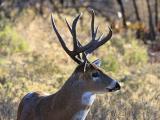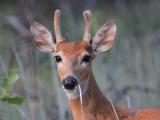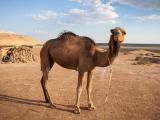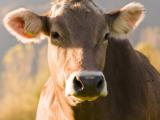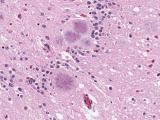Aug 31, 2005 (CIDRAP News) – The federal government ended its investigation of the nation's second case of bovine spongiform encephalopathy (BSE) without finding any more cases or learning exactly how the cow was infected, officials announced yesterday.
The case, confirmed in June, was in a 12-year-old Brahma cross cow that was born and raised in Texas. Officials believe the cow contracted BSE, or mad cow disease, by eating contaminated feed before 1997, when the government banned the use of cattle protein in cattle feed, a practice that can spread BSE.
The US Department of Agriculture (USDA) said it had removed and tested 67 cattle from the farm the cow came from. Of another 200 animals that had left the farm, most had previously been slaughtered or were presumed dead, though 20 could not be traced.
The agency also traced 213 calves in a hunt for two that had been born to the infected cow within 2 years before its death. Of these, 208 had "entered feeding and slaughter channels," while four were presumed to have gone the same route and one was untraceable.
The Food and Drug Administration (FDA) investigated the infected cow's feed history and whether the cow's herd mates were processed at rendering plants that complied with the 1997 ruminant-to-ruminant feed ban.
The agency said it found no evidence of feed products used on the farm since 1997 that contained prohibited protein, though it did find one feed that contained an unidentifiable animal protein source. Investigators also concluded that all slaughter and rendering plants that processed the cow's herd mates were in compliance with the feed ban.
Although investigators could not find a specific feed source likely to have caused the infection, "it is probable that the most likely route of exposure for this animal was consumption of an animal feed containing mammalian protein" before the feed ban took effect, the FDA said.
The USDA and FDA said they were "very pleased with the results of their investigation, which show the animals of interest did not present a threat to livestock and that the ruminant feed rule is being followed."
The Texas cow was the first native-born animal known to have BSE in the United States. The nation's first case was identified in December 2003 in a Canadian-born cow that had been brought into Washington state.
See also:
USDA's full epidemiology report
http://www.aphis.usda.gov/newsroom/hot_issues/bse/downloads/bse_final_epi_report8-05.pdf
